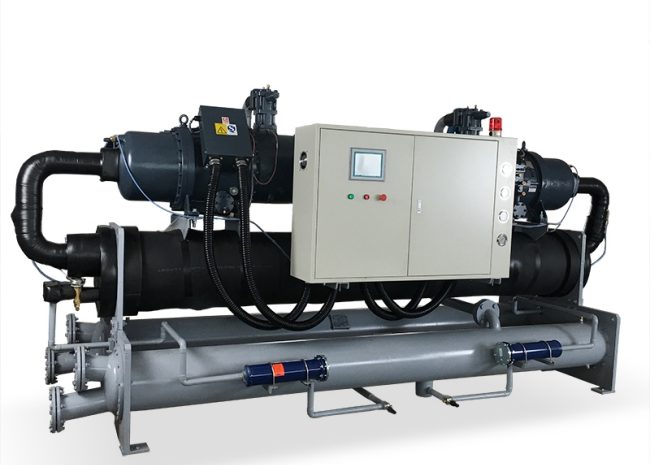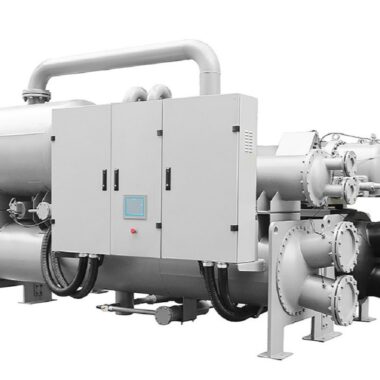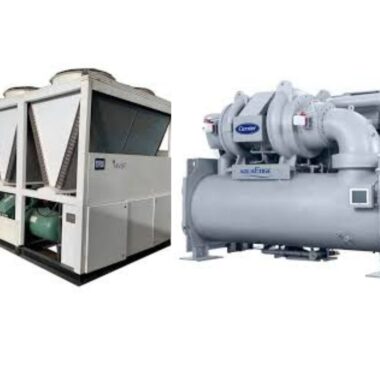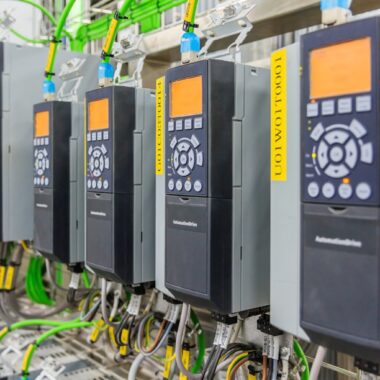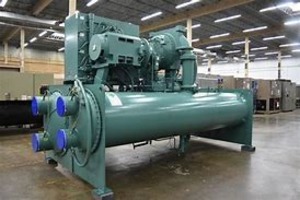Water-Cooled Chillers Manufacturer
Water-cooled chiller systems can provide efficiency and environmental impact advantages over air-cooled systems. Water chillers can be water-cooled, air-cooled, or evaporative-cooled. Chilled water is used to cool and dehumidify air in mid to large-size commercial, industrial, and institutional facilities.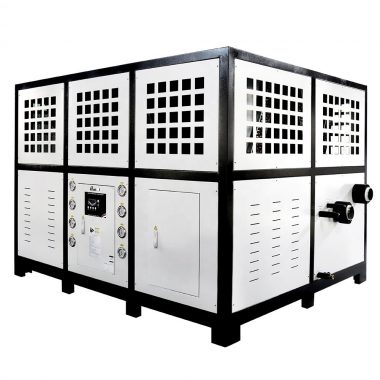 A cooling tower is specifically designed for the water-cooled chiller. Water acts as a stimulant and coolant for the Condensers of this chiller. Wet surfaces are the reason to be more successful at transferring heat into cool. It can also do compression work at wetter bubble temperatures, and the efficiency of water-cooled chillers increases.
A cooling tower is specifically designed for the water-cooled chiller. Water acts as a stimulant and coolant for the Condensers of this chiller. Wet surfaces are the reason to be more successful at transferring heat into cool. It can also do compression work at wetter bubble temperatures, and the efficiency of water-cooled chillers increases.
Lifespan
Water-cooler chillers have a longer lifetime than air-cooled chillers. This is because water-chillers aren’t needed to be exposed to outdoor elements such as rain, snow, ice, or heat, thus they are more protected.
Cost-Effective
The initial costs of installation and start-up might be significant. But once the water chiller system is up and running. it is a worthwhile long-term investment with few maintenance costs and component replacements.
Energy Savings
Water is an excellent form for carrying heat energy, which means it will quickly vanish the heat within an associated process faster while utilizing less energy.
Energy Efficiency
water chillers operate independently of ambient environmental temperatures, allowing them to avoid system inefficiencies that occur with fluctuations in ambient thermal conditions. Due to their principle of operation (using water to dissipate heat from a system). Water chillers are efficient in rapidly transplanting temperatures in larger industrial applications.
Safety
These chillers use water as a refrigerant instead of using toxic chemicals. This inevitably makes it safer for people who have frequent contact with them.
Noise-less
It operates very quiet. They own a few dynamic components that make them not generate unwanted noises in an industrial environment. This helps with industrial noise level regulations.


